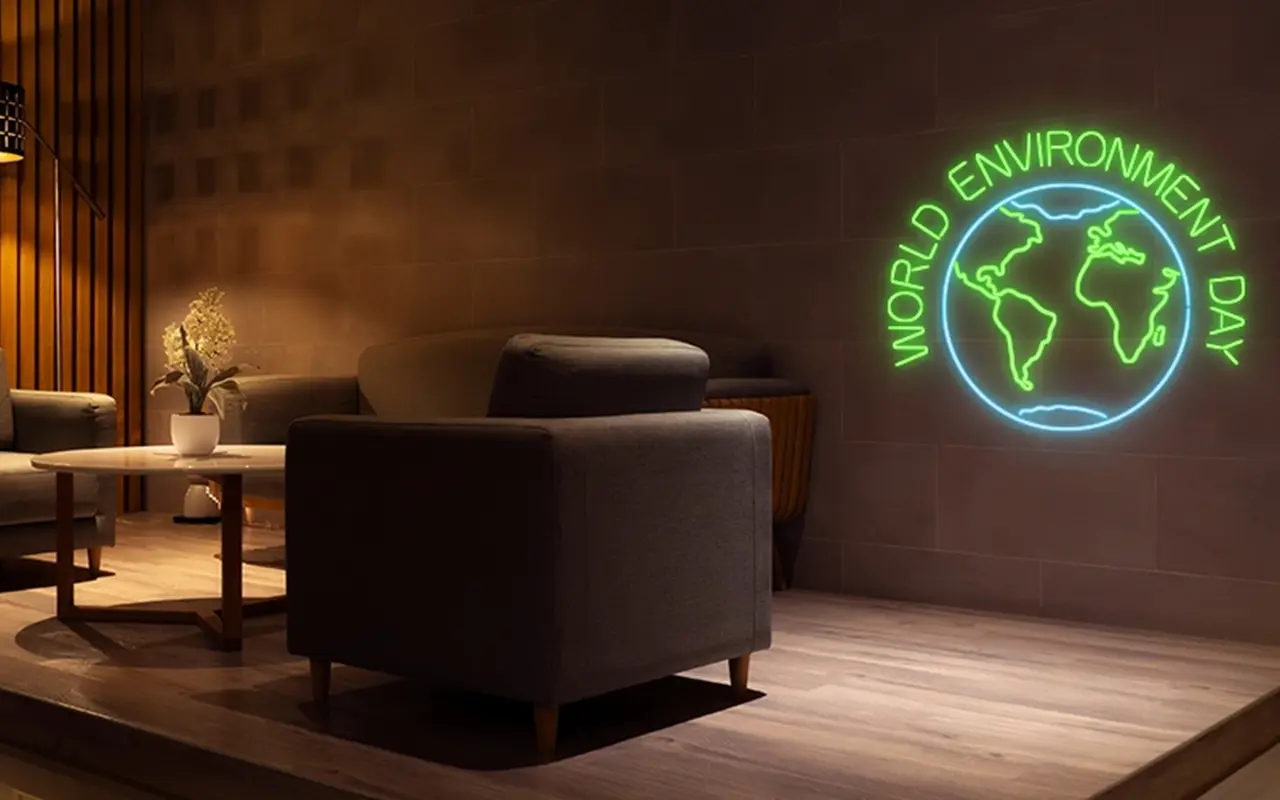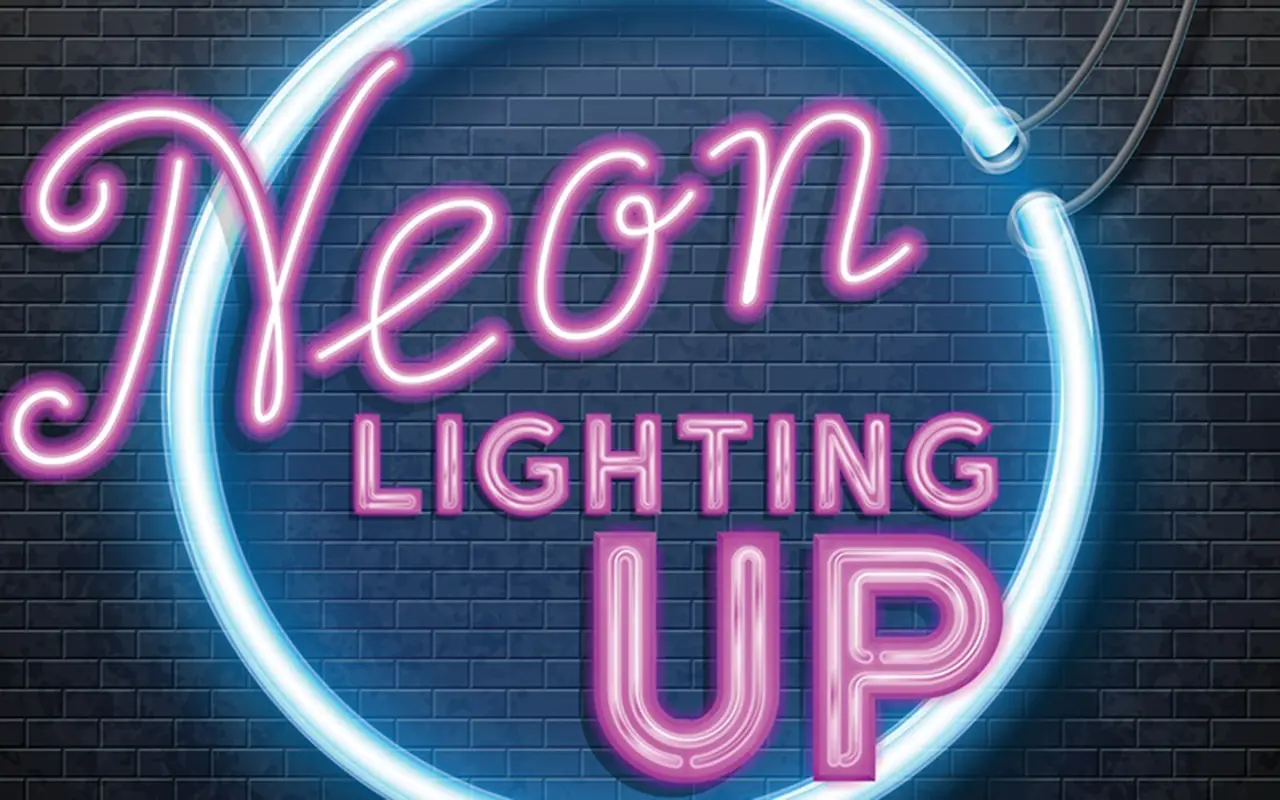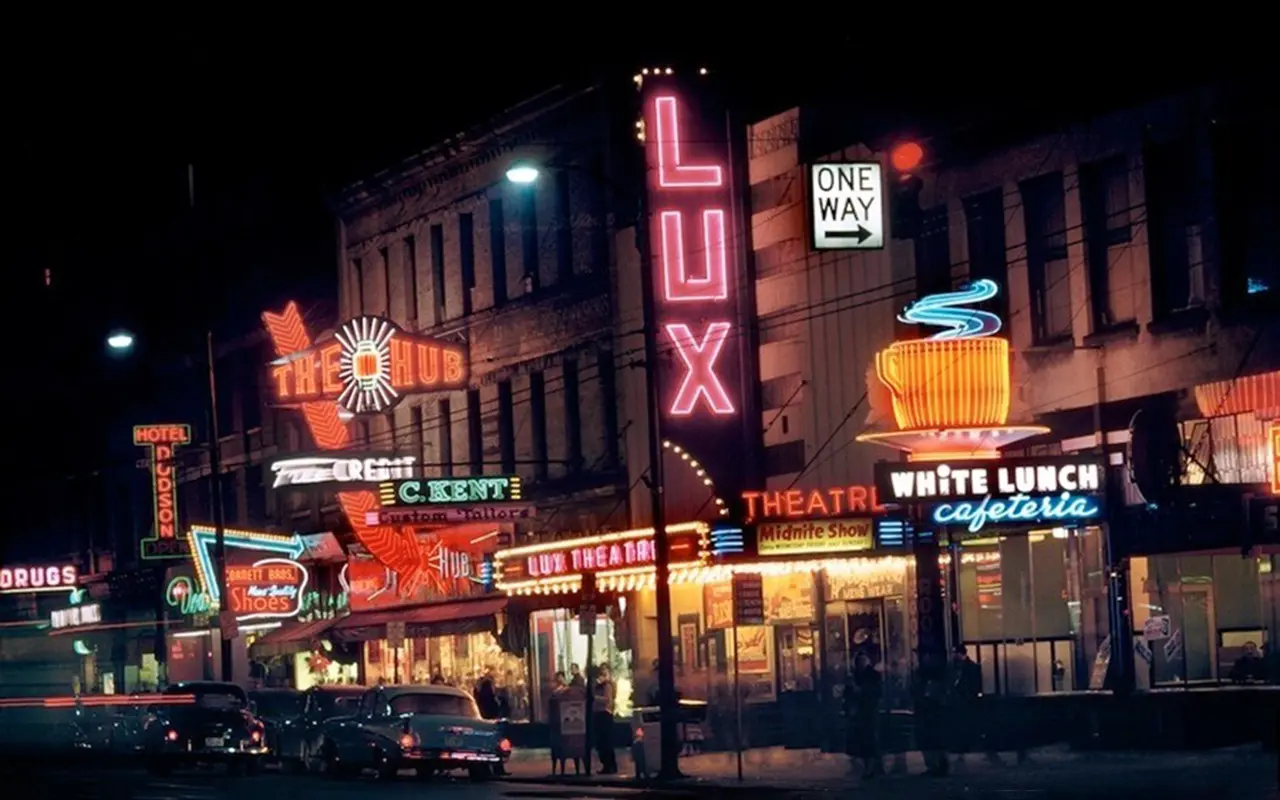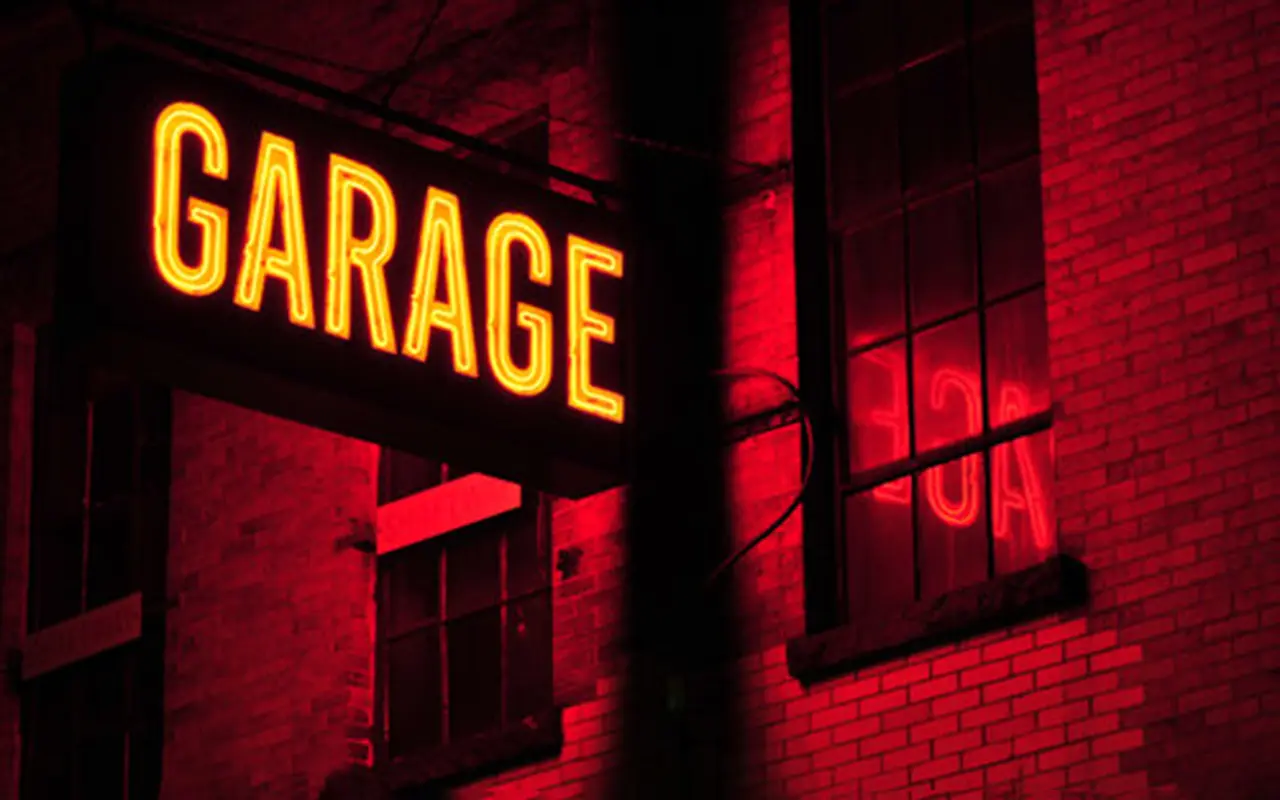Veel mensen vragen zich af of lichtreclames 24/7 aan kunnen blijven zonder problemen. Of je je nu zorgen maakt over energiekosten, veiligheid of onderhoud, wij hebben de gedetailleerde inzichten om de beste beslissing te nemen voor je neonreclame.
Ja, neonlichten altijd aan laten staan is veilig en wordt zelfs aanbevolen door experts. Deze aanpak vermindert slijtage aan de transformator en zorgt voor een lange levensduur terwijl de energiekosten laag blijven. Er moeten echter wel enkele veiligheidsmaatregelen en onderhoudspraktijken worden gevolgd.
Laten we eens kijken waarom het beter zou zijn om je neonbord te laten staan en welke voorzorgsmaatregelen je moet nemen. We beantwoorden ook veelgestelde vragen over neonlichten.
Moet ik mijn Neon Sign 24/7 aan laten staan?
Neonlichten zijn ontworpen om continu te branden, maar moet je ze altijd aan laten staan? Veel experts in de verlichtingsindustrie beweren dat het 24/7 aan laten staan van neonlichten de beste aanpak is om hun levensduur en prestaties te behouden. Laten we eens kijken waarom deze schijnbaar contra-intuïtieve praktijk voordelig is.
Verminder slijtage door neonlichten aan te houden
Eerst en vooral zorgt het vaak aan- en uitschakelen van een neonbord voor stress op de interne onderdelen, vooral op de transformator. Elke keer dat het bord wordt aangezet, ervaart het een stroomstoot. Deze stroomstoot kan slijtage veroorzaken aan de transformator en de elektroden in de neonbuizen, wat leidt tot een geleidelijke afbraak van de onderdelen. Als een neonbord daarentegen constant aanstaat, blijft de elektrische stroom stabiel, waardoor deze slijtage tot een minimum wordt beperkt.
Energie-efficiëntie van neonlichten
Een andere reden waarom experts aanraden om neonreclames aan te laten staan, is hun efficiënte energieverbruik. Ondanks de opvallende gloed die neonlichten produceren, is hun stroomverbruik relatief laag. De meeste moderne neonreclames gebruiken tussen de 60 en 100 watt elektriciteit, vergelijkbaar met een enkele gloeilamp. Voor commerciële bedrijven maakt dit lage stroomverbruik neonreclames tot een geweldige investering voor branding, omdat ze de klok rond de aandacht kunnen trekken zonder een aanzienlijke piek in de energierekening te veroorzaken.
Stabiliteit van gassen in neonlichten
Bovendien heeft de continue werking van neonlichten nog een onverwacht voordeel: het helpt de gassen in de buizen te stabiliseren. De gassen in neonlichten, meestal neon of argon, produceren levendige kleuren wanneer ze onder stroom staan. Als het bord herhaaldelijk uit- en aangezet wordt, wordt het ionisatieproces van de gassen onderbroken, waardoor de prestaties van het bord na verloop van tijd kunnen verslechteren. Continue werking houdt de gassen in een stabiele toestand en zorgt voor een heldere en consistente gloed.
Voorbeelden uit de praktijk van continu gebruik van neon
Veel bedrijven, met name bedrijven die op late uren of rond de klok werken, zoals bars, restaurants en buurtwinkels, gebruiken al heel lang neonreclames vanwege hun duurzaamheid en efficiëntie. Door hun neonborden 24/7 aan te laten, zorgen ze niet alleen voor zichtbaarheid, maar profiteren ze ook van de lange levensduur van hun borden. Het weinige onderhoud dat nodig is en de minimale impact op de energiekosten maken deze aanpak praktisch en kosteneffectief voor bedrijfseigenaren.
Voor huizen geldt hetzelfde principe. Of je neonbord nu een esthetisch element is in een woonkamer of een leuke toevoeging aan een garage of speelkamer, door het te laten branden kan je de levensduur verlengen. De consistente, zachte gloed kan zelfs dienen als nachtlampje of sfeerverlichting, waardoor het meer dan alleen een decoratieve functie heeft.
Verbruiken neonlichten veel elektriciteit?
Een van de meest voorkomende zorgen van mensen die neonreclame overwegen is het energieverbruik. Met hun heldere, constante gloed is het normaal om je af te vragen of ze een aanzienlijke hoeveelheid elektriciteit verbruiken. Neonreclames zijn echter verrassend energiezuinig, vooral in vergelijking met andere soorten verlichting.
Uitsplitsing van energieverbruik in neonlichten
In tegenstelling tot wat vaak wordt gedacht, zijn neonreclames verre van energievreters. Het stroomverbruik van een normaal neonbord ligt tussen de 60 en 100 watt, wat gelijk staat aan het verbruik van een standaard gloeilamp. Een neonbord dat 12 uur per dag aanstaat, verbruikt bijvoorbeeld ongeveer 0,72 tot 1,2 kilowattuur (kWh) elektriciteit. Dit is een relatief lage hoeveelheid vergeleken met de opvallende verlichting die neonlichten bieden.
LED Neon Signs-Een nog efficiëntere optie
Voor degenen die kiezen voor LED neonreclame is de energie-efficiëntie zelfs nog groter. LED neon gebruikt slechts ongeveer 15% tot 20% van de energie die traditionele neon met glazen buizen nodig heeft. Dit komt omdat LED's zo zijn ontworpen dat ze elektriciteit zeer efficiënt omzetten in licht, waarbij heel weinig energie verloren gaat in de vorm van warmte. LED neonreclames zijn perfect voor diegenen die de esthetische aantrekkingskracht van neonverlichting willen, maar met nog lagere elektriciteitskosten.
Kostenefficiëntie van neonlichten
Een neonbord 24/7 laten branden kost gemiddeld ongeveer 20 cent per dag. Ter vergelijking: een gloeilamp van 75 watt zou voor dezelfde duur iets meer kosten, ondanks de veel kleinere visuele impact. Voor bedrijven die de aandacht moeten trekken op alle uren van de dag, worden deze kleine dagelijkse kosten meer dan gecompenseerd door de verhoogde zichtbaarheid en betrokkenheid van de klanten.
Voor thuisgebruikers is het gebruik van een neonbord net zo betaalbaar. Gezien het feit dat neonborden vaak twee doelen dienen - als decoratieve elementen en als lichtbronnen - vinden veel huiseigenaren dat hun elektriciteitsrekening nauwelijks de aanwezigheid van het bord weerspiegelt. Dit maakt neon tot een praktische keuze voor wie op zoek is naar stijlvolle en toch betaalbare verlichting.
Zijn neonlichten veilig om altijd aan te laten?
Als het om elektrische apparaten gaat, is veiligheid altijd een punt van zorg. Als je een apparaat langere tijd aan laat staan, roept dat natuurlijk vragen op over mogelijke risico's, maar neonreclames, vooral de moderne met LED-technologie, zijn ontworpen met het oog op veiligheid. Laten we eens kijken waarom neonlichten veilig zijn voor continu gebruik en welke voorzorgsmaatregelen je moet nemen om hun veiligheid na verloop van tijd te garanderen.
LED Neon Signs vs. Traditionele Glas Neon Signs
Moderne LED neonreclames hebben een revolutie teweeggebracht in de veiligheid en duurzaamheid van neonverlichting. In tegenstelling tot traditionele glazen neonlichten, die warm kunnen worden en gevoelig zijn voor breuk, zijn LED neonlichten zo gemaakt dat ze koel aanvoelen en splintervrij zijn. De LED technologie die gebruikt wordt in deze borden werkt op een veel lager voltage, waardoor het risico op elektrische schokken of brand vermindert.
Traditionele neonlichten, die glazen buizen gebruiken die gevuld zijn met gassen zoals neon of argon, kunnen warmte produceren door de energieomzetting die in de buizen plaatsvindt. Deze hitte kan het glas breekbaar maken en verhoogt het risico op brandwonden bij aanraking. Maar zelfs met deze risico's worden traditionele neonreclames al tientallen jaren op grote schaal gebruikt met relatief weinig veiligheidsincidenten - vooral omdat ze ontworpen zijn voor continu gebruik. Maar in vergelijking met LED neonreclames, bieden deze laatste een superieur veiligheidsniveau, vooral voor thuis en binnenomgevingen.
Veiligheidsvoordelen van LED Neon Signs
LED neonreclames worden meestal omhuld door een duurzame acrylbuis, die extra bescherming biedt tegen stoten. Dit acryl materiaal zal veel minder snel versplinteren in vergelijking met glas, waardoor LED neonlichten een veel veiligere optie zijn voor zowel residentieel als commercieel gebruik. Bovendien zijn ze ontworpen om heel weinig warmte af te geven, zelfs na lange perioden van gebruik, waardoor ze veiliger zijn om aan te raken en energiezuiniger zijn.
Afgezien van hun fysieke constructie, minimaliseert de laagspanningsstroom die LED neonlichten gebruiken het risico op elektrische storingen. De lagere spanning betekent ook minder belasting van het elektriciteitssysteem, waardoor de kans op een stroomstoot die tot elektrische gevaren leidt kleiner wordt. Dit maakt LED neonlichten een geschikte optie voor bedrijven, huizen en zelfs kinderkamers, waar veiligheid een prioriteit is.
Belangrijke veiligheidstips voor langdurig gebruik van neon
Hoewel neonborden over het algemeen veilig zijn, zorgt het volgen van een paar veiligheidsmaatregelen ervoor dat je bord soepel en zonder incidenten werkt. Deze tips zijn vooral belangrijk als je een neonbord 24/7 aan laat staan:
- Controleer de bedrading regelmatig: Zorg ervoor dat de bedrading in goede staat is en geen rafels of blootliggende delen vertoont. Beschadigde bedrading kan elektrische risico's met zich meebrengen, dus het is belangrijk om deze regelmatig te inspecteren en indien nodig te repareren of vervangen.
- Houd het bord in een goed geventileerde ruimte: Hoewel LED neonlichten niet veel warmte produceren, is het toch een goed idee om ze in een ruimte te plaatsen waar de lucht vrij kan circuleren. Dit verkleint de kans op oververhitting.
- Vermijd blootstelling aan vocht: Neonborden moeten altijd in een droge omgeving worden bewaard. Blootstelling aan vocht kan de elektrische componenten van het bord aantasten, waardoor het risico op kortsluiting of storingen toeneemt.
- Gebruik de juiste transformator: Zorg ervoor dat de transformator die je neonbord van stroom voorziet de juiste nominale waarde heeft voor je specifieke model. De verkeerde transformator kan leiden tot overbelasting of schade, wat de veiligheidsrisico's kan vergroten.
Door deze voorzorgsmaatregelen te nemen, kun je je neonbord gerust langere tijd laten branden zonder je zorgen te maken over veiligheidsproblemen.
Laatste tips om de levensduur van neonlichten te maximaliseren
Als je je neonbord 24/7 aan laat staan, heeft dat duidelijke voordelen voor de prestaties en de levensduur, maar er zijn nog een aantal andere dingen die je kunt doen om de levensduur van je neonbord nog verder te verlengen. Een goede verzorging en regelmatig onderhoud zorgen ervoor dat je uithangbord nog jarenlang helder zal schijnen.
De juiste installatie is essentieel
Een van de belangrijkste stappen die je kunt nemen om de levensduur van je neonbord te verlengen, is ervoor zorgen dat het correct wordt geïnstalleerd. Dit betekent dat je de juiste spanning en bedrading gebruikt, gebaseerd op de specificaties van de fabrikant. Een verkeerd geïnstalleerd bord kan leiden tot elektrische storingen, wat de levensduur kan verkorten of zelfs schade kan veroorzaken. Als je niet zeker bent over de technische aspecten van de installatie, is het altijd het beste om een professional te raadplegen om de klus goed te klaren.
Vermijd extreme omgevingsomstandigheden
Neonborden, vooral die met glazen buizen, kunnen gevoelig zijn voor omgevingsfactoren. Blootstelling van het bord aan direct zonlicht, extreme hitte of vriestemperaturen kan het materiaal bijvoorbeeld na verloop van tijd aantasten. Vocht is een andere factor die vermeden moet worden, omdat het roest of corrosie kan veroorzaken in de elektrische componenten, wat kan leiden tot kortsluiting.
Plaats borden voor binnen in een stabiele, gematigde ruimte waar ze niet worden blootgesteld aan plotselinge temperatuurschommelingen of een te hoge luchtvochtigheid. Als je neonbord buiten wordt geplaatst, overweeg dan een beschermende behuizing die het bord beschermt tegen de elementen terwijl het toch zichtbaar blijft.
Regelmatige inspecties en onderhoud
Net als elk ander elektrisch apparaat kun je met regelmatige inspecties van je neonbord potentiële problemen opsporen voordat het grote problemen worden. Let goed op de staat van de transformator, bedrading en buizen. Als je flikkeren of dimmen opmerkt, kan dat een vroege indicatie zijn dat er iets gerepareerd of vervangen moet worden.
Transformator gezondheid: De transformator is het hart van je neonlicht. Als deze tekenen van slijtage begint te vertonen, zoals zoemen of oververhitting, moet hij mogelijk worden vervangen. Een defecte transformator kan de levensduur van je neonbord drastisch verkorten.
Toestand bedrading: Zorg ervoor dat alle draden intact blijven en geen rafels of beschadigingen vertonen. Losse of gebroken draden kunnen niet alleen de prestaties van het bord beïnvloeden, maar ook veiligheidsrisico's opleveren.
Uw neonbord goed schoonmaken
Het schoonhouden van je neonbord is belangrijk om het heldere en levendige uiterlijk te behouden. Gelukkig zijn neonborden, vooral de LED-versies, gemakkelijk schoon te maken. Je hebt geen speciaal gereedschap of agressieve chemicaliën nodig om de klus te klaren.
- Schakel het bord uit voordat u het schoonmaakt: Zorg er altijd voor dat je neonbord is uitgeschakeld en losgekoppeld van de stroombron voordat je het schoonmaakt. Dit voorkomt elk risico op elektrische schokken.
- Stof regelmatig af: Gebruik een zachte doek of een plumeau om stof en vuil van het oppervlak van je neonbord te verwijderen. Voor moeilijk bereikbare plekken kun je voorzichtig een nylon borstel met zachte haren gebruiken.
- Schoonmaken met zorg: Meng voor hardnekkiger vlekken of vuil een kleine hoeveelheid ammoniak met water (½ kopje van elk) en bevochtig een doek met de oplossing. Veeg het bord voorzichtig schoon en zorg ervoor dat je niet te veel druk uitoefent om kwetsbare onderdelen niet te beschadigen.
Door deze eenvoudige reinigingspraktijken te volgen, zal je neonbord net zo helder blijven schijnen als op de dag dat je het hebt geïnstalleerd.
Uw neonbord onderhouden voor langdurig gebruik
Door een goede installatie, regelmatige inspecties en goede schoonmaakgewoonten te combineren, kun je de levensduur van je neonbord aanzienlijk verlengen. Een goed onderhouden neonbord kan vele jaren meegaan en biedt een heldere, boeiende gloed die de aandacht blijft trekken. Of het nu voor een bedrijf is of voor thuis, een goede verzorging zorgt ervoor dat je neonbord in topvorm blijft en je ruimte voor lange tijd verlicht.
Conclusie
Je neonbord de hele tijd laten branden is niet alleen veilig - het is vaak de beste keuze om de levensduur te behouden. Met een minimaal energieverbruik, uitstekende duurzaamheid en levendige visuele aantrekkingskracht zijn neonlichten een kosteneffectieve en praktische oplossing voor zowel woningen als bedrijven. Zorg gewoon voor een goede installatie en regelmatig onderhoud, en je zult vele jaren kunnen genieten van de heldere gloed van je neonbord.
Kortom, je neonreclame 24/7 laten branden kan met de juiste voorzorgsmaatregelen zowel veilig als voordelig zijn. Als je overweegt om je bewegwijzering te upgraden, Unitop is hier om te helpen. Als een van China's toonaangevende fabrikanten van LED-strip verlichting en LED neon flexbieden we innovatieve, energiezuinige verlichtingsoplossingen op maat van jouw behoeften. Of je nu vragen hebt of klaar bent om je ruimte te verlichten met geavanceerde neonverlichting, neem vandaag nog contact met ons op om te ontdekken hoe onze expertise de weg voorwaarts kan verlichten.

Tom is nu de Sales Manager van Unitop (China) Co.. Hij is in de LED Verlichting industrie sinds 2005. Hij is een expert in verkoop & marketing, en fabrieksmanagement. Hij houdt van bodybuilding, en hij is ook een gekke Apple-fan! Hij is een hardwerkende man en houdt ervan te leren en nieuwe dingen te proberen.
Email: tom@unitopledstrip.com WhatsApp: +86-18680307140









Laat een reactie achter
Wil je meedoen aan de discussie?Voel je vrij om bij te dragen!